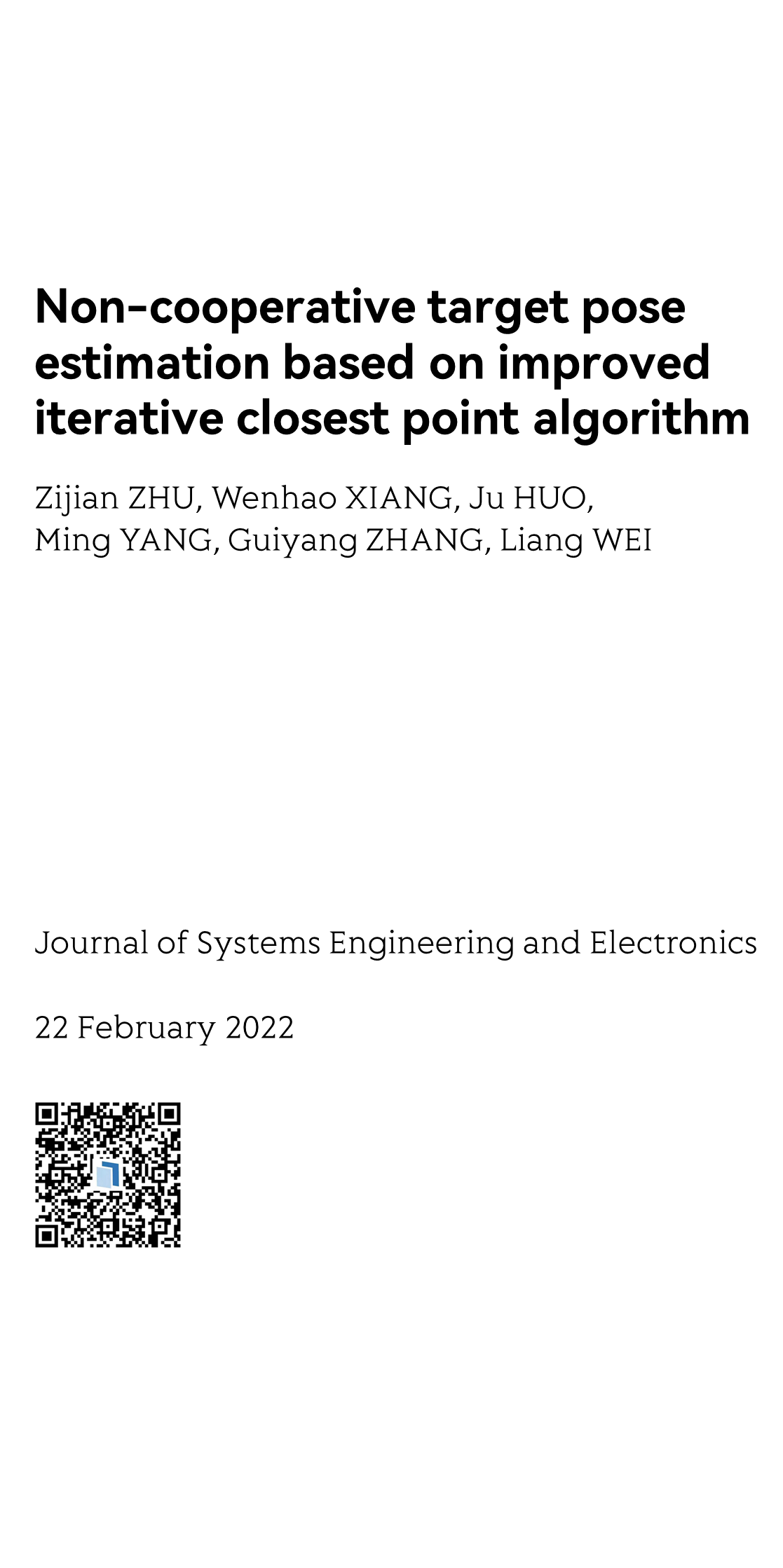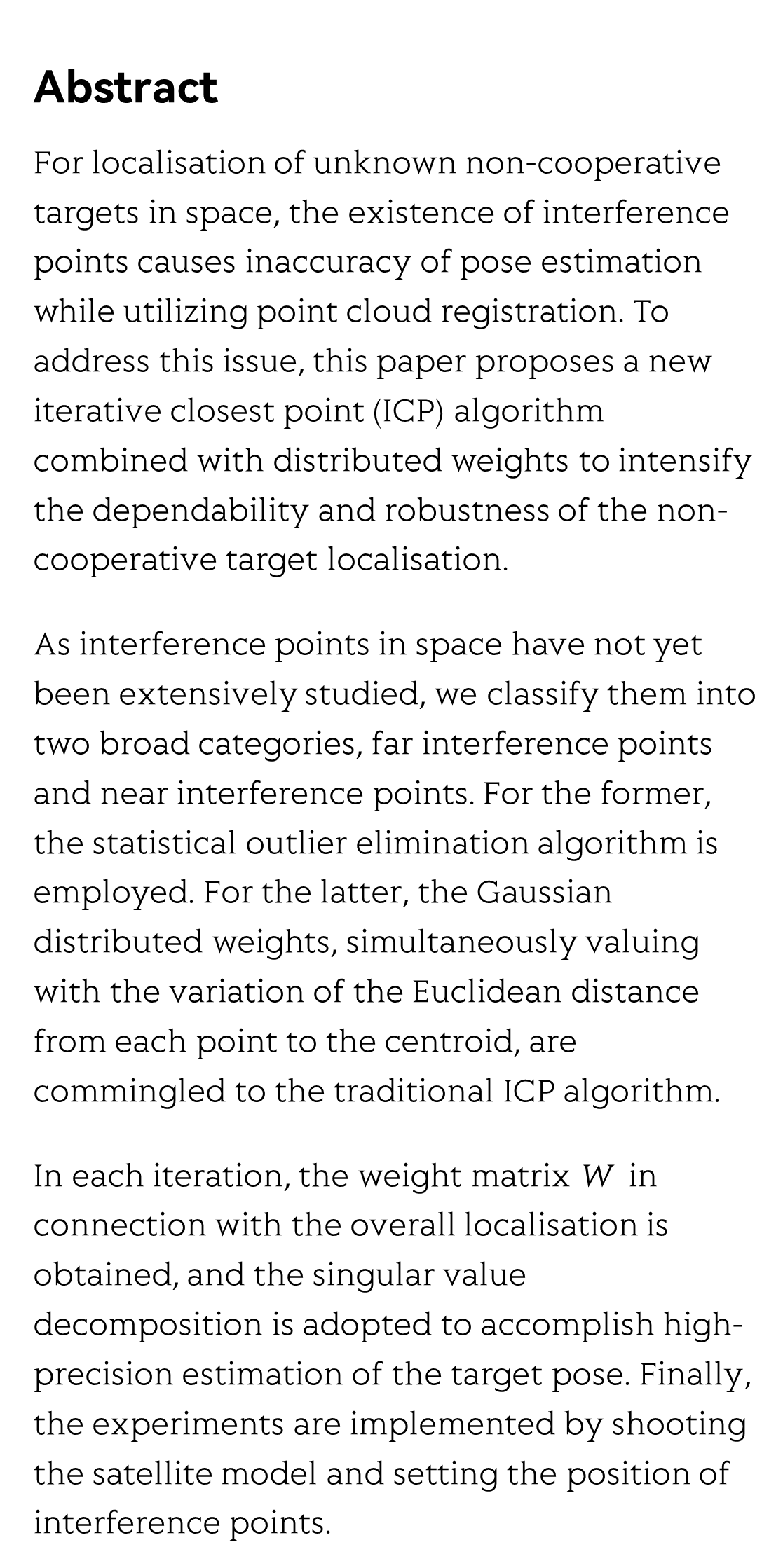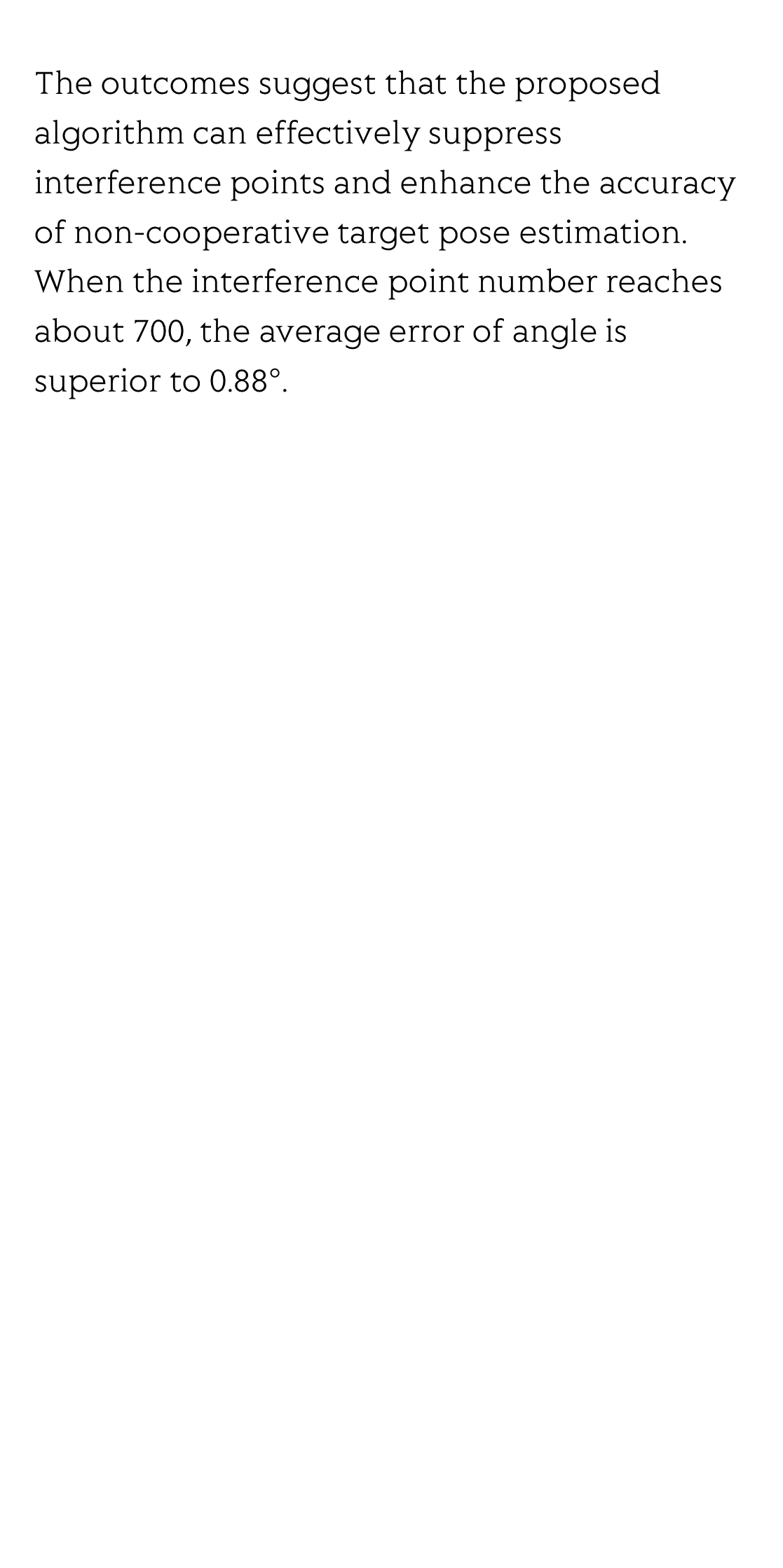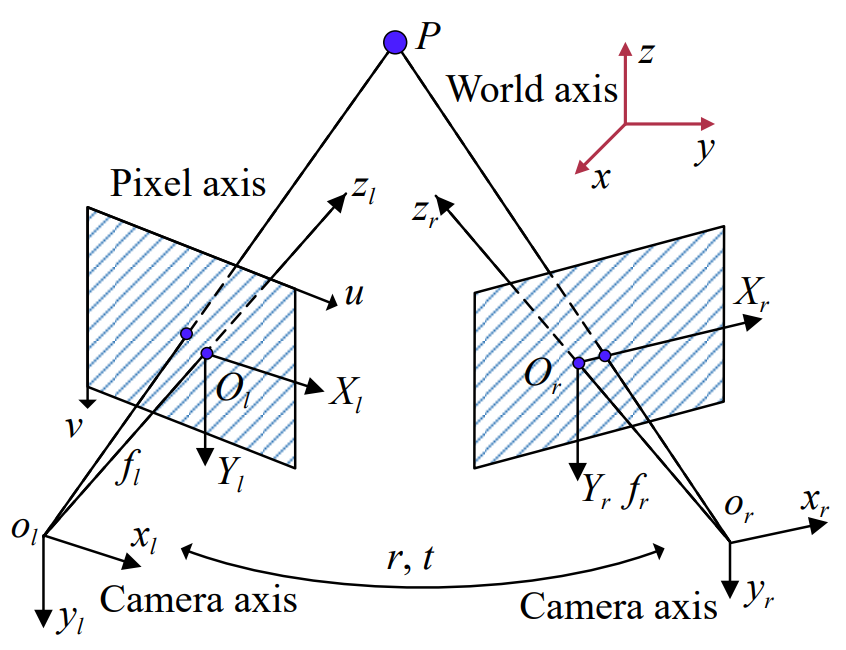(Peer-Reviewed) Non-cooperative target pose estimation based on improved iterative closest point algorithm
Zijian ZHU 朱子健 ¹, Wenhao XIANG 向文豪 ³, Ju HUO 霍炬 ¹ ², Ming YANG 杨明 ¹, Guiyang ZHANG 张贵阳 ¹, Liang WEI 魏亮 ¹
¹ Department of Astronautics, Harbin Institute of Technology, Harbin 150006, China
中国 哈尔滨 哈尔滨工业大学航天学院
² Department of Electrical Engineering and Automation, Harbin Institute of Technology, Harbin 150006, China
中国 哈尔滨 哈尔滨工业大学电气工程及自动化学院
³ Systems Engineering Research Institute, China State Shipbuilding Corporation Limited, Beijing 100036, China
中国船舶工业集团有限公司 系统工程研究院
Abstract
For localisation of unknown non-cooperative targets in space, the existence of interference points causes inaccuracy of pose estimation while utilizing point cloud registration. To address this issue, this paper proposes a new iterative closest point (ICP) algorithm combined with distributed weights to intensify the dependability and robustness of the non-cooperative target localisation.
As interference points in space have not yet been extensively studied, we classify them into two broad categories, far interference points and near interference points. For the former, the statistical outlier elimination algorithm is employed. For the latter, the Gaussian distributed weights, simultaneously valuing with the variation of the Euclidean distance from each point to the centroid, are commingled to the traditional ICP algorithm.
In each iteration, the weight matrix W in connection with the overall localisation is obtained, and the singular value decomposition is adopted to accomplish high-precision estimation of the target pose. Finally, the experiments are implemented by shooting the satellite model and setting the position of interference points.
The outcomes suggest that the proposed algorithm can effectively suppress interference points and enhance the accuracy of non-cooperative target pose estimation. When the interference point number reaches about 700, the average error of angle is superior to 0.88°.
Flicker minimization in power-saving displays enabled by measurement of difference in flexoelectric coefficients and displacement-current in positive dielectric anisotropy liquid crystals
Junho Jung, HaYoung Jung, GyuRi Choi, HanByeol Park, Sun-Mi Park, Ki-Sun Kwon, Heui-Seok Jin, Dong-Jin Lee, Hoon Jeong, JeongKi Park, Byeong Koo Kim, Seung Hee Lee, MinSu Kim
Opto-Electronic Advances
2025-09-25
Dual-frequency angular-multiplexed fringe projection profilometry with deep learning: breaking hardware limits for ultra-high-speed 3D imaging
Wenwu Chen, Yifan Liu, Shijie Feng, Wei Yin, Jiaming Qian, Yixuan Li, Hang Zhang, Maciej Trusiak, Malgorzata Kujawinska, Qian Chen, Chao Zuo
Opto-Electronic Advances
2025-09-25







